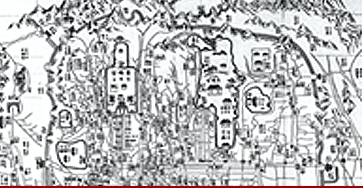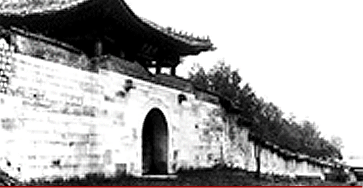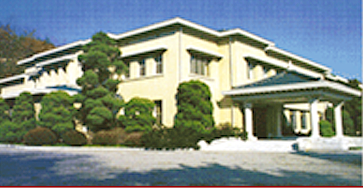HISTORY CHEONG WA DAE
The Early Goryeo Period

In 1067, the 21st year of the reign of King Munjong of the Goryeo Dynasty (918-1392), Yangju, now Seoul, was elevated to namgyeong (the south capital), one of the three capitals of Goryeo. Gaegyeong (now Gaeseong) was the main capital, Pyongyang was seogyeong (the west capital) and Gyeongju was donggyeong (the east capital) until Yangju was designated the south capital. In the following year, a new palace was built in namgyeong. It is highly likely that the new palace was located on the current site of Cheong Wa Dae.
The Early Goryeo Period
King Sukjong (1054-1105; r. 1095-1105) of Goryeo attempted without success to move the main capital to namgyeong. Inspired by an appeal of Kim Wi-je who believed in the geomantic theory of the Buddhist Great Master Doseon, King Sukjong visited namgyeong and observed for himself the geographical features there to decide on a candidate site for a palace. Eventually, the current site of Cheong Wa Dae, south of Bugaksan mountain, was chosen.
The Early Joseon Period
The current site of Cheong Wa Dae was used as a venue for a royal ritual called Hoemaeng during the Joseon period (1392-1910) up until Japan’s Hideyoshi invasion in 1592, when Gyeongbokgung Palace, the main palace, was burned down. During the Hoemaeng ritual, merit subjects and/or their legitimate descendants joined with the king to pledge allegiance before the spirits of heaven and earth and to be granted rewards according to their merits. According to the Taejong Sillok (Annals of King Taejong), there was a village near the Cheong Wa Dae site. The name of the village was known as Buk-dong or Dae-eunam-dong. It is recorded in the Annals that on November 14, 1404, a Hoemaeng was held in Buk-dong near Gyeongbokgung Palace.
The Late Joseon Period

The current site of Cheong Wa Dae was used as a venue for a royal ritual called Hoemaeng during the Joseon period (1392-1910) up until Japan’s Hideyoshi invasion in 1592, when Gyeongbokgung Palace, the main palace, was burned down. During the Hoemaeng ritual, merit subjects and/or their legitimate descendants joined with the king to pledge allegiance before the spirits of heaven and earth and to be granted rewards according to their merits. According to the Taejong Sillok (Annals of King Taejong), there was a village near the Cheong Wa Dae site. The name of the village was known as Buk-dong or Dae-eunam-dong. It is recorded in the Annals that on November 14, 1404, a Hoemaeng was held in Buk-dong near Gyeongbokgung Palace.
The Japanese Colonial Period
Since 1910 when Korea was forcibly annexed to Japan, many buildings built during the periods of the Joseon Dynasty and the Great Han Empire in the back garden of Gyeongbokgung Palace have been demolished. Particularly, when the Joseon Expo was held in 1929 in Gyeongbokgung Palace and its rear garden to celebrate the 20th anniversary of the Government-General of Korea, most buildings were torn down except for a few such as Chimnyugak. Later, the Japanese imperialists constructed a residential building for the Governor-General of Korea on the site of the old rear garden and named it Gyeongmudae.
The Republic of Korea Period

When the Republic of Korea was founded in the wake of country’s liberation, Gyeongmudae began to be used as a presidential office and residence by President Rhee Syng-man. The name of the presidential compound, however, was officially changed to Cheong Wa Dae on December 30, 1960 by President Yun Po-sun, who claimed that the old name was a reminder of Japanese colonial rule and the dictatorial rule of President Rhee. The name of Cheong Wa Dae was derived from the fact that the main building was covered with blue roof tiles, which is one of the iconic cultural properties in Korea.



 INTERNATIONAL
INTERNATIONAL